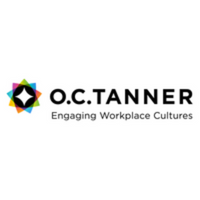Nails in the coffin: 6 examples of recognition gone wrong

Well, what does bad recognition look like anyway? Through the years, we’ve heard stories of managers who mispronounced employee names while presenting awards for achievement. We’ve been told of leaders who have recognised the wrong number of years of service for an employee. We even heard mention at one organisation, about an award being presented to an employee underneath the door of a bathroom cubicle. Think about that. Under what circumstances could anyone think that was a good idea?
Of course, learning how to properly recognise an employee is critical to a manager’s success—to build trust, loyalty and increase engagement. But, just as critical is learning how NOT to recognise an employee.
The global research carried out by the O.C. Tanner Institute reveals key findings into how to effectively recognise employees and we have found time after time that without question, purposeful recognition accelerates the performance of an organisation. However, what didn’t get published in our white papers, books and blogs, but was actually some of the most interesting findings, was insights into how NOT to practice recognition.
Here are six of the worst “nails in a manager’s coffin” culled from focus groups around the globe.
- Nail 6. The manager takes credit: It’s absolutely cringe-worthy when a manager brings an employee in front of their team and takes credit for what they did by saying something like, “Susan, those long hours we worked together is why you’re receiving this award. It was as much as struggle for me as it was for you.”
- Nail 5. The recognition is a mystery: Many people in the focus groups reported receiving a mysterious package on their desk, through the post, or on their chair. And, as much as people may like birthday surprises, the mystery recognition gesture not only loses its meaning, but it also marginalises any recognition the employee receives in the future.
- Nail 4. Quotas, quotas, quotas: Okay, so research has proven that frequent recognition drives employee performance. But, simply filling a manager “recognition quota” is a dangerous practice. Imagine this for a second. A manager stands in front of her team and sincerely recognises an individual for quick thinking and decisive action. But in the next breathe the manager goes on to recognise someone else for simply doing what is expected of them, just to make up numbers. This immediately dilutes the value of the recognition given and in that case, does anyone really win?
- Nail 3. The timing is bad: One of the biggest complaints employees have reported is that they receive a recognition presentation, but it’s extremely late. A quote from one focus group member: “After 13 years of employment, I just received my 5 and 10-year career achievement awards at the same time.” Well, enough said about timing.
- Nail 2. They don’t know their audience: The examples of these mistakes can sound funny at first. But, they’re not. When a person who hates coffee gets gift cards to a coffee chain as a reward, or an employee in a global office receives a gift card to a store that doesn’t exist in their country. The message being sent by a manager is NOT “I appreciate you” but instead it’s, “I don’t have the time to get to know you.” What if your employees took as little time to know the company as you did to know them?
- Nail 1. It’s all a song and dance: The number one complaint from focus groups around the world about recognition is that it wasn’t sincere. Nobody wants to receive an obligatory recognition gesture. They actually want to be appreciated. They want to feel that their efforts are making an impact people love. But, if they feel that they’re being patronised, their effort, attitude and commitment to a manager and a company will fizzle fast. Being fake with employees can seal any managers fate.
Simple mistakes in any recognition presentation are typically forgiven by employees, because they still appreciate the intention—the sincerity behind the effort. However, it’s easy to see in these six sins how recognition done wrong could quickly be the death of a manager’s influence.
How do you properly recognise your people?:
- Appreciation should be timely.
- It should be specific to the great work performed.
- It should adequately express how the employee’s work impacted the organisation’s goals, values or purposes.
- More than anything else, appreciation should be sincere.
Look around at the people making your company tic every day. They’re either building your future as their manager, or they’re ready to seal your fate. Don’t hand them the nails.
The authors are David Sturt Executive Vice President of Marketing at O.C. Tanner Institute and Todd is Director of Institute Content.
This article is provided by O.C.Tanner.
In partnership with O. C. Tanner
Giving teams the integrated tools they need when, where and how they need them.







